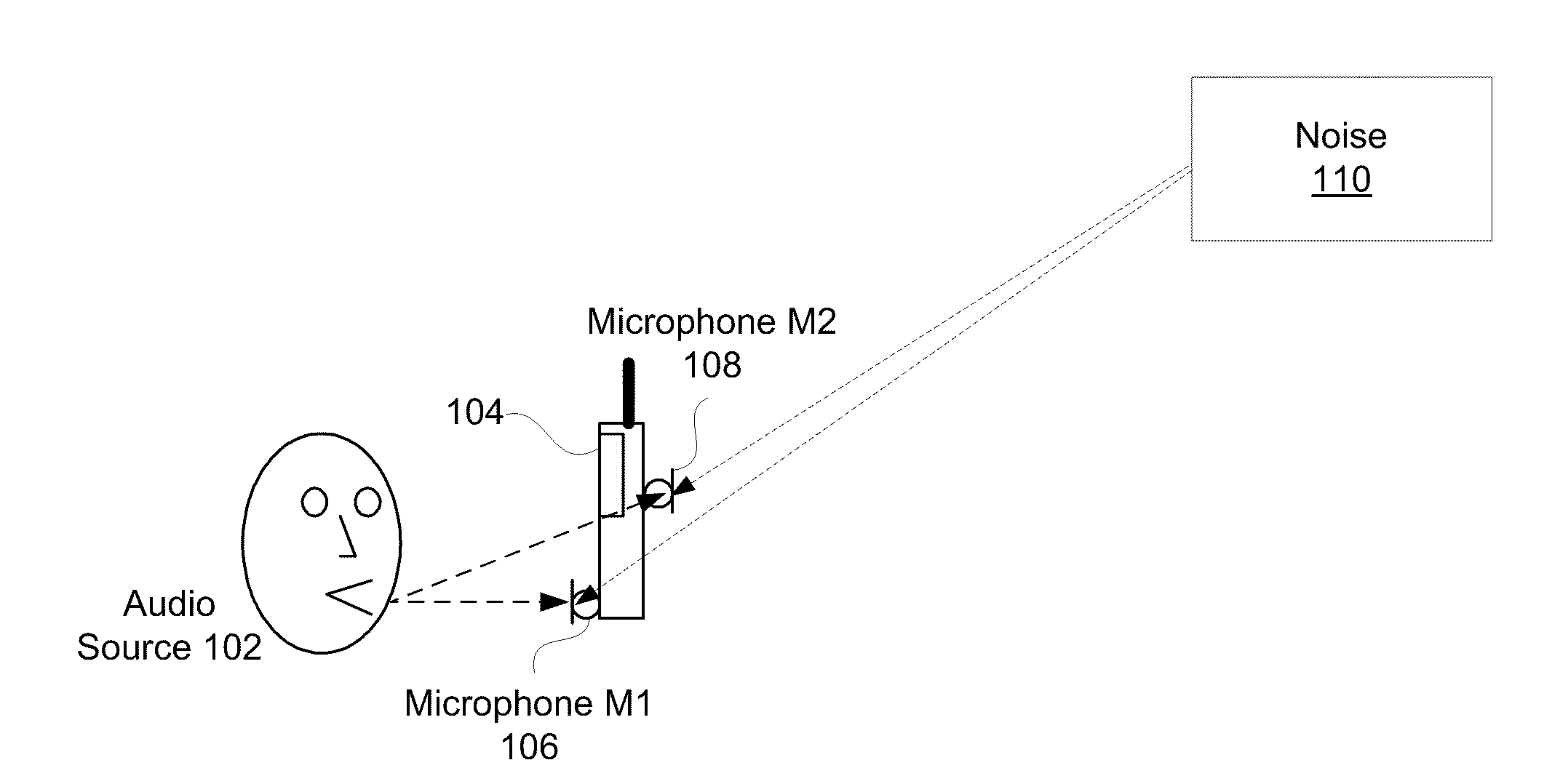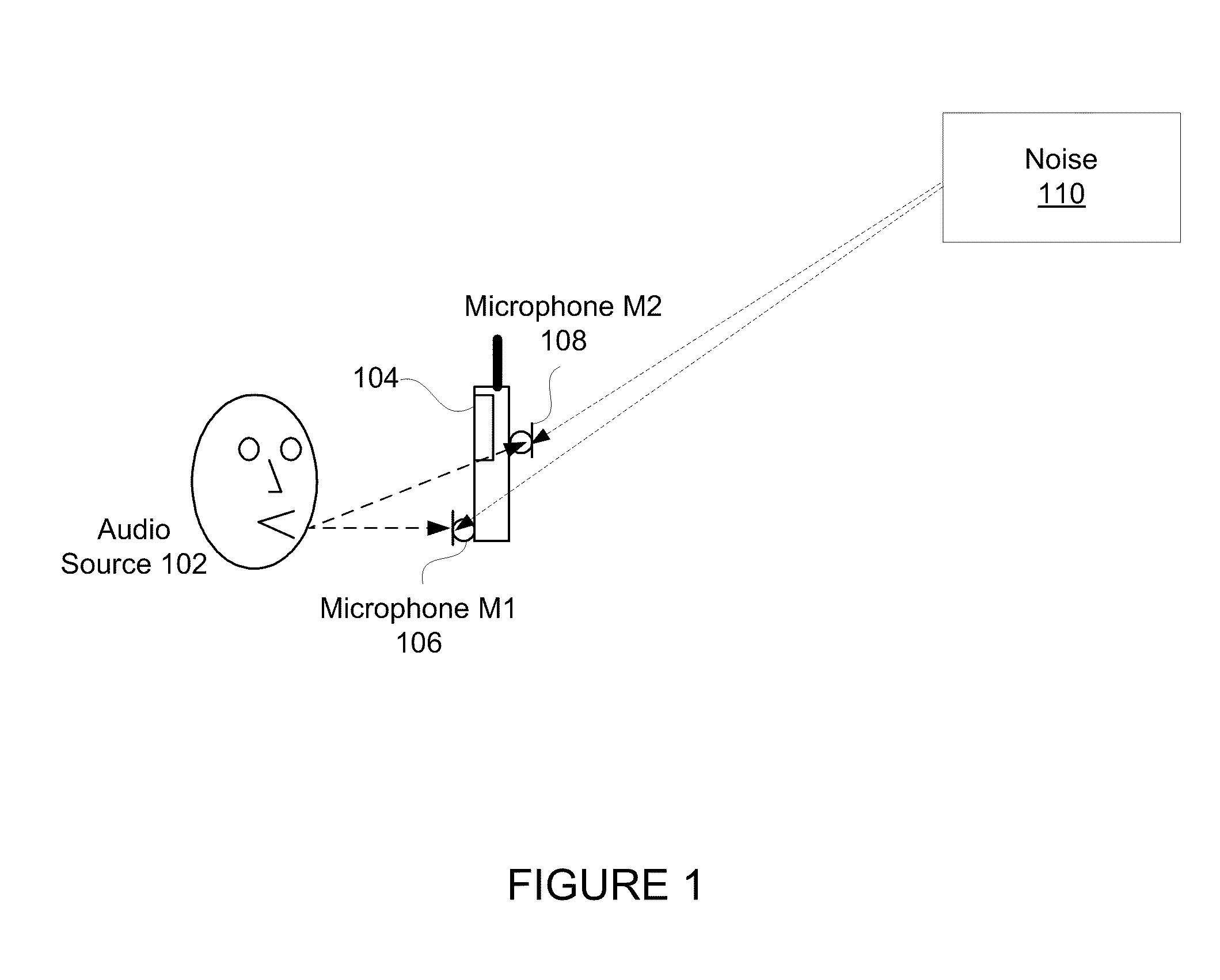Method for Jointly Optimizing Noise Reduction and Voice Quality in a Mono or Multi-Microphone System
a mono or multi-microphone system and noise reduction technology, applied in the field of audio processing, can solve the problems of speech degradation, speech distortion, speech distortion modification of the output speech spectrum, etc., and achieve the effect of reducing the energy level of the noise component and reducing the noise within the acoustic signal
- Summary
- Abstract
- Description
- Claims
- Application Information
AI Technical Summary
Benefits of technology
Problems solved by technology
Method used
Image
Examples
Embodiment Construction
[0023]The present technology provides adaptive noise reduction of an acoustic signal using a sophisticated level of control to balance the tradeoff between speech loss distortion and noise reduction. Noise reduction may be performed by applying reduction values (e.g., subtraction values and / or multiplying gain masks) to corresponding sub-band signals of the acoustic signal, while also limiting the speech loss distortion introduced by the noise reduction to an acceptable threshold level. The reduction values and thus noise reduction performed can vary across sub-band signals. The noise reduction may be based upon the characteristics of the individual sub-band signals, as well as by the perceived speech loss distortion introduced by the noise reduction. The noise reduction may be performed to jointly optimize noise reduction and voice quality in an audio signal.
[0024]The present technology provides a lower bound (i.e., lower threshold) for the amount of noise reduction performed in a ...
PUM
 Login to View More
Login to View More Abstract
Description
Claims
Application Information
 Login to View More
Login to View More - R&D
- Intellectual Property
- Life Sciences
- Materials
- Tech Scout
- Unparalleled Data Quality
- Higher Quality Content
- 60% Fewer Hallucinations
Browse by: Latest US Patents, China's latest patents, Technical Efficacy Thesaurus, Application Domain, Technology Topic, Popular Technical Reports.
© 2025 PatSnap. All rights reserved.Legal|Privacy policy|Modern Slavery Act Transparency Statement|Sitemap|About US| Contact US: help@patsnap.com



